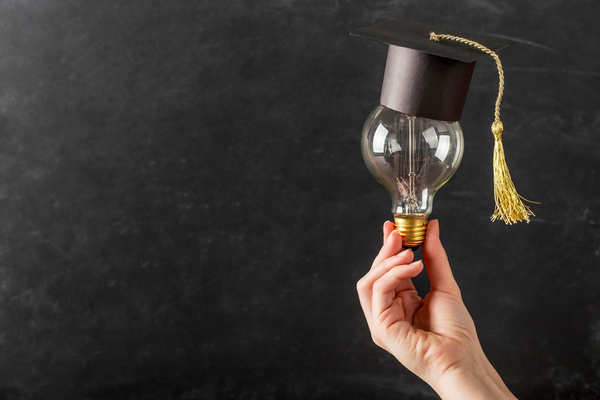Didactic methods
Didactic methods are a type of scientific methods used for the dissemination of knowledge by teaching students.
The term "didactic" derives from the Greek "didaskein" which means "to teach". The term "method" derives from the Greek "methodos", composed of the terms "meta" meaning "beyond" and "hodos" meaning "way". Examples of didactic methods include textbooks and lectures.

|
| Image by Freepik |
The net result of the didactic methods can be represented as the irreversible process
\[ (T + K_T) + (S + K_S) \Longrightarrow (T' + K_T') + (S' + K_S') \]where \( T \) is the teacher, \( S \) is a student or students, and \( K_T \) and \( K_S \) their original knowledge, respectively. In the common case, both teacher and student are humans; however, the teacher can be a machine [1]. The intriguing possibility of robot students has appeared very recently thanks to advances in artificial intelligence [2]. No distinction will be made here of the human or non-human nature of teachers and students [3].
Subtracting \( K_T \) and \( K_S \) from both sides of the teaching process, we get
\[ T + S \Longrightarrow [T' + (K_T' - K_T)] + [S' + (K_S' - K_S)] \]The difference \( (K_S' - K_S) \) is the knowledge acquired by the student through didactic methods. In general, \( K_T' \) will be different from \( K_T \). This difference accounts for the teachers' own learning process [4] and the fact that, usually, only a part of \( K_T \) is transmitted to the students. For example, a chemist might be an expert in the stereoselective synthesis of octahydronaphthalenes by intramolecular Diels-Alder reactions but only teach students a first course in general chemistry.
The objectives of the didactic methods are for students to understand and learn concepts, and to develop skills, behaviors, and new abilities. Didactic methods can be recursive, this is when these methods are applied to improve the knowledge about the didactic methods, in which case they help to achieve productive learning, achieve the required results, etc.
The distinction between teachers and students is relative and thus, for example, the teacher of an introductory course in computational biology becomes a student when he learns a new computational method that has just been published in a specialized scientific journal.
Didactic methods are also subject to heuristic methods in order to improve the material or the teaching method. We hypothesize what material to present students and how to do it, and then modify/improve the material or the didactics based on student feedback and results.
Students can be mostly passive listeners, like in lectures, or active agents, like in experimental training in the laboratory or when preparing free-choice reports and only asking teachers for suggestions and assistance.
REFERENCES AND NOTES
- As in computer-based learning at home. It is easy to imagine a future with robot teachers in the classrooms or at home.
- Experts systems based on artificial intelligence need a period of training by human specialists, before they can satisfactorily solve problems.
- It is also possible to imagine intelligent aliens pursuing similar venture on unknown planets.
- Teachers can learn a whole spectrum of things, ranging from new ways of misunderstanding a topic by students, to original fresh ways to solve problems from the brightest students. I know of the case of a student who solved an examination problem, not as Einstein did, but using a new method of his own invention. This student received congratulations from his teacher.